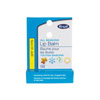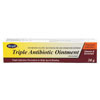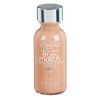How To Prevent Cold Sores
Some things you want for life. You would welcome an endless supply of money, happiness and great health. But you probably wouldn’t feel the same about unattractive cold sores. Unfortunately, the fact is that once you’ve had one, you’ll continue to get them on and off forever.
Why the misfortune? Simply put, when herpes simplex virus type 1 (HSV-1) - the cause of cold sores - enters your body, there’s no getting rid of it. After you contract it and experience your first bout of blisters, the virus lays dormant in your central nervous system where it does no harm. It doesn’t budge until a trigger pulls it out of dormancy and you get another round of cold sores; it then returns to its hiding spot.
Now, there is good news. While there’s no cure for cold sores or a 100 percent safeguard against contracting the virus, there are simple steps you can take to help prevent blisters from popping up. And when one happens to arise, a few medications can make it go away quickly. Get ready to fight cold sores with the following treatment and prevention tips.
The comings and goings of cold sores
Your body often gives you warning signals, by way of symptoms, that a blister is about to emerge (you can get one or more during an outbreak). A few hours to a couple of days before, you might experience soreness, itching, tingling, burning or numbness where the blister will erupt, says Dr. Jaggi Rao, dermatology residency program director at the University of Alberta and medical director of Acne Clinics of Canada. They usually appear around the lips and mouth, but they can also occur on your forehead, cheeks, nose and chin. Once the cold sore develops, uncomfortable feelings often go away. “But if the blister collapses, the ulcer that remains can very painful until it finally heals several days later,” he says. To soothe discomfort, try an over the counter cream like Abreva, available at your local Rexall family of pharmacies, as soon as symptoms appear. If left untreated, cold sores tend to clear up in seven to 10 days, leaving no scars behind.
After months of blister-free bliss, you may be perplexed as to why you suddenly got another bout. What stirs HSV-1 from rest varies among people, but there are some typical culprits. “Common triggers include exposure to UV light (for example, after a sunburn), viral or bacterial infections that alter one’s immunity, emotional stress and bad eczema or skin inflammation over the site of infection,” says Rao.
The dreaded spread
Anyone at any point in their life can contract HSV-1. If you get fever blisters, an alias for cold sores, you’re far from alone. “About 90 percent of the population has been exposed to the cold sore virus,” says Dr. Peter Vignjevic, a dermatologist in Hamilton and an assistant professor of dermatology at McMaster University. But not everyone who contracts and harbours HSV-1 (or another strain of the virus, HSV-2, which is occasionally the cause) actually gets blisters - some lucky ones never experience any symptoms.
One of the reasons why so many people get HSV-1 may be because it’s contagious and easily passed from person to person. You can even transfer it to different parts of your body.
When talking about prevention, the first thing to note is how to stop the spread. When HSV-1 is dormant, the risk of sharing it is low; it’s when the virus is active during outbreaks that you need to be extra cautious. Here’s what to do to avoid giving it to another person, picking it up if you’re virus-free or transferring it to a new spot on your skin:
- When blisters are active, don’t kiss or have mouth-to-skin contact with anyone else, recommends the Mayo Clinic. This is especially important if the other person has any small lesions (even microscopic ones) on their skin that HSV-1 can sneak into.
- Keep your hands off sores as much as possible, says Vignjevic. You can get the virus on your fingers by touching or picking them, making it easy to infect other areas of your body. Wash your hands regularly so they stay germ-free.
- Don’t share cups, utensils, food, make up, razors or anything else that comes in contact with your mouth (or other infection sites) when you have blisters.




